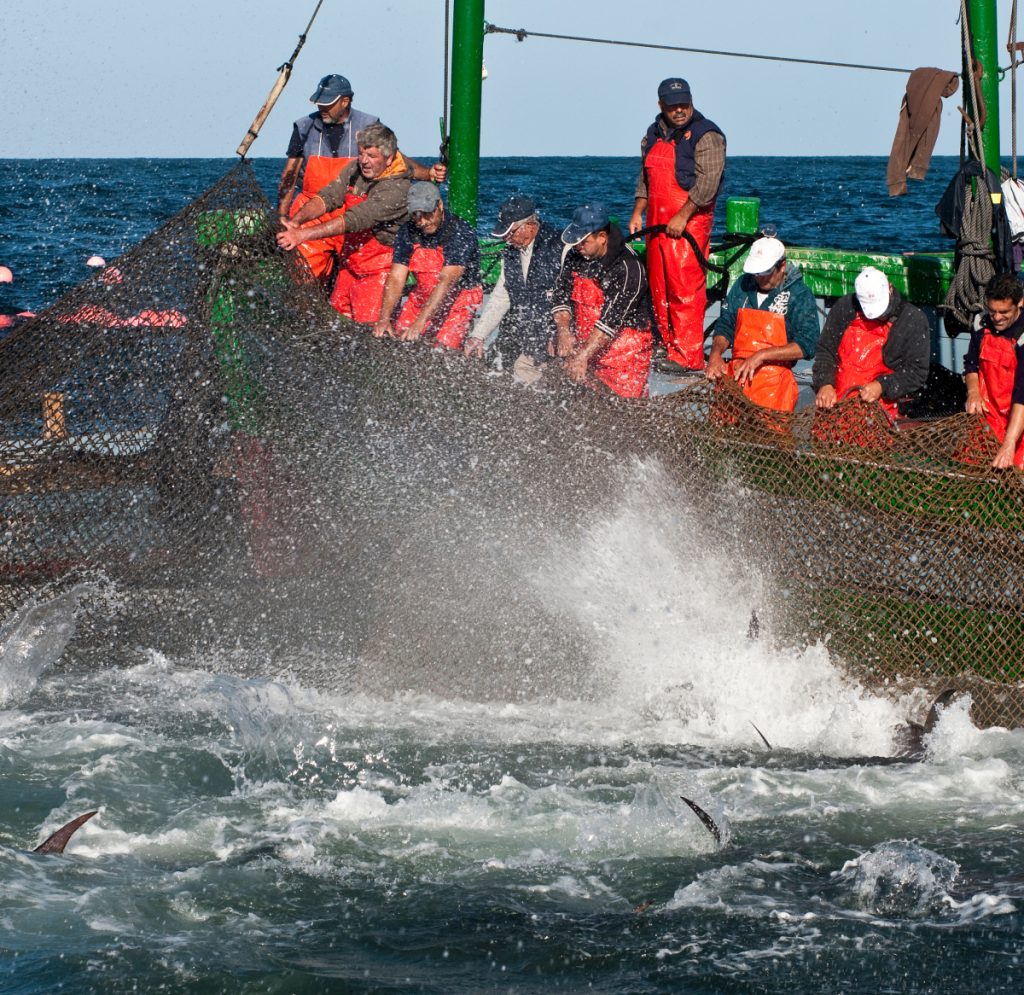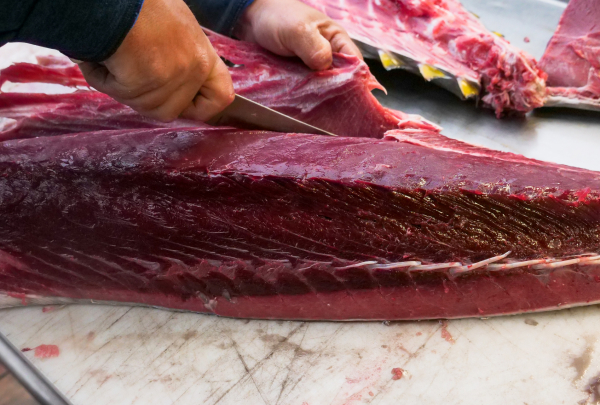La Almadraba
It’s a system based on a complex labyrinthine structure of nets with two essential parts: raberas (trawls) and cuadro (box).
The former are few hundred metres long pieces of netting – set vertically to the bottom, so to catch and direct the tuna to the frame. The latter consists of a rectangular structure made up of nets stretched all the way to the bottom, divided into several compartments: chamber, buche, bordonal and copo. Its function is to group the tuna caught for capture. Copo is the only compartment with a net bottom that’s raised to the surface to extract the fish, in an operation known as levantá. As copo narrows, the water seems to boil due to the high concentration of tuna. This is the critical point of this art of fishing, and the trapsmen work intensely as a team, shouting to support each other – the way they’ve done it for centuries.

Almadraba has never changed – a fishing system based on a set of nets, ropes, anchoring devices and boats, combined with the skill of the fishermen, the weather and, of course, a component of luck.

It can be argued that the trap is a sustainable fishing gear. On the one hand, it’s used only during a specific period of the year, without interfering with the life cycles of the species. On the other hand, it’s a selective system: of all the tuna that circulate in the waters of the Strait, only a few are diverted to the coast, where they’re introduced into the system of nets of the trap that catches them. Furthermore, the trap is environmentally friendly and clean.

